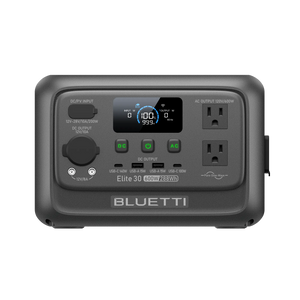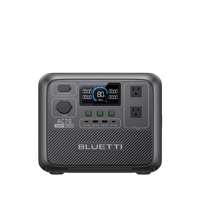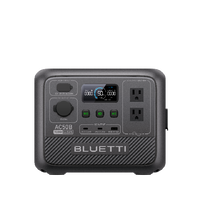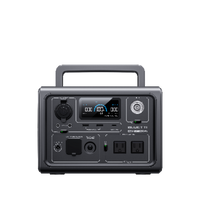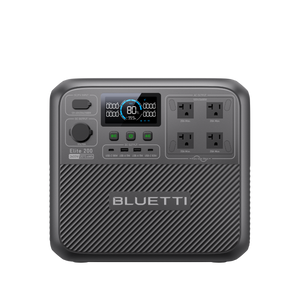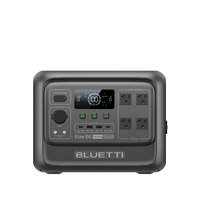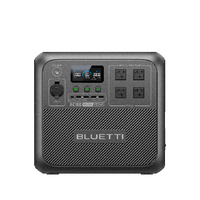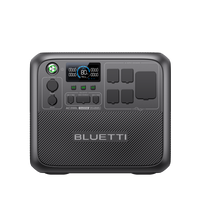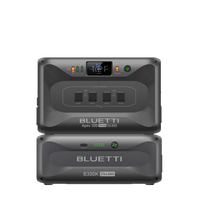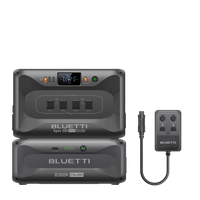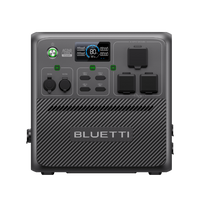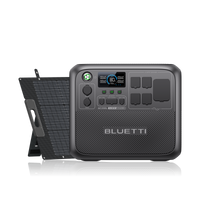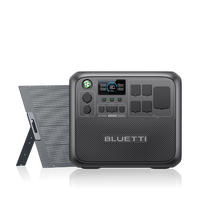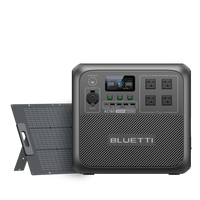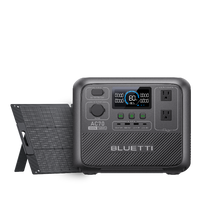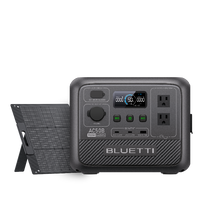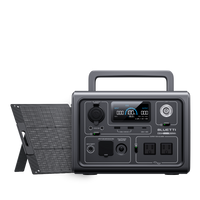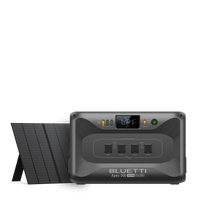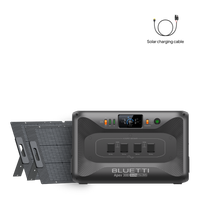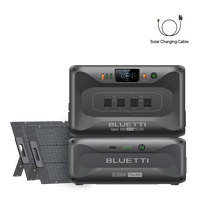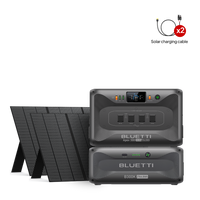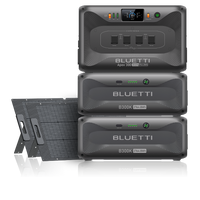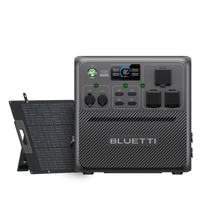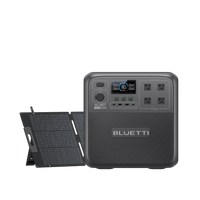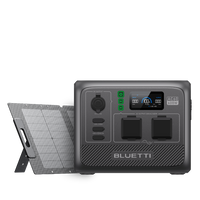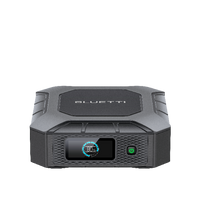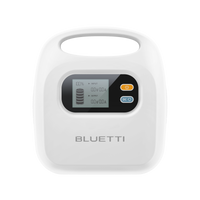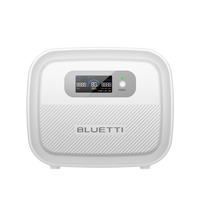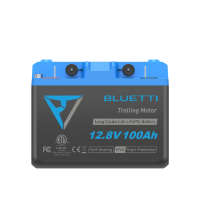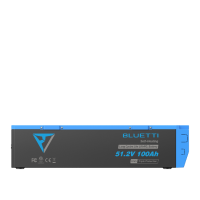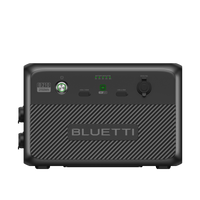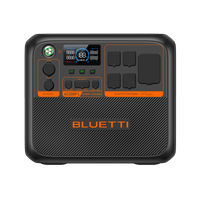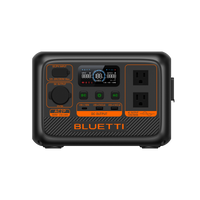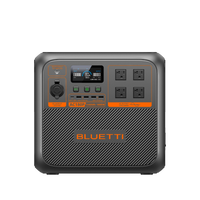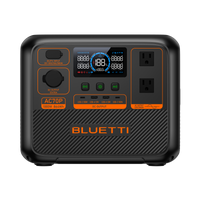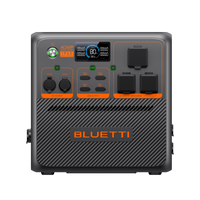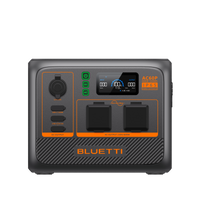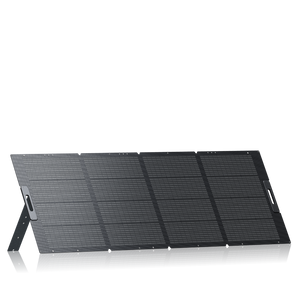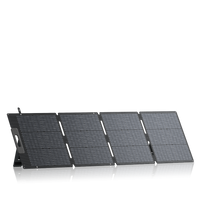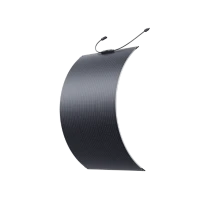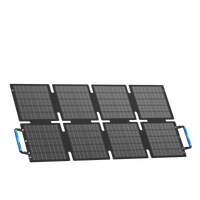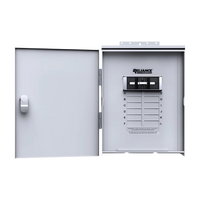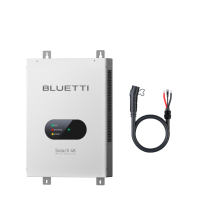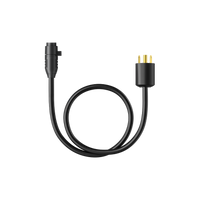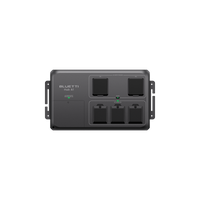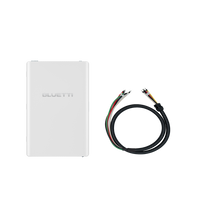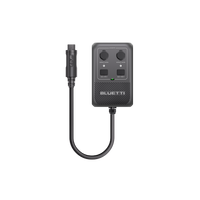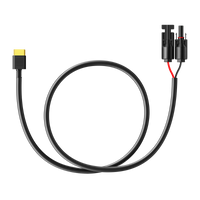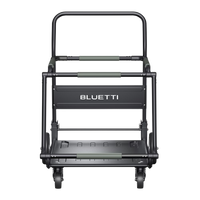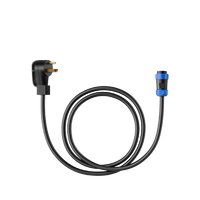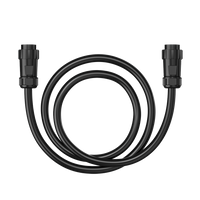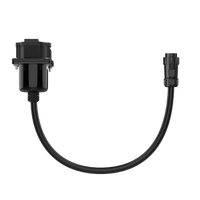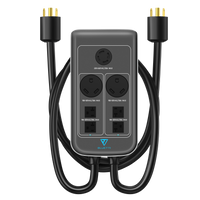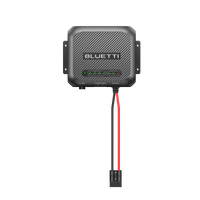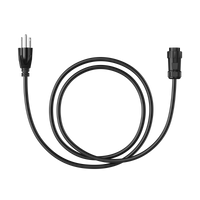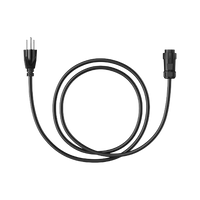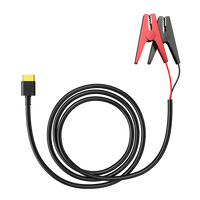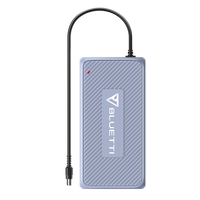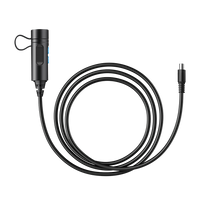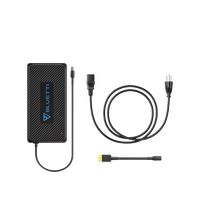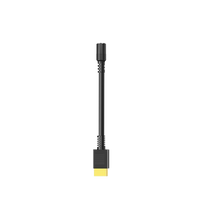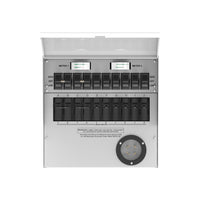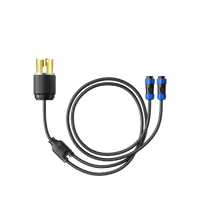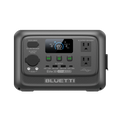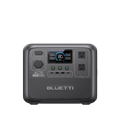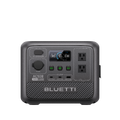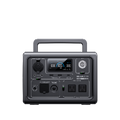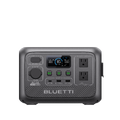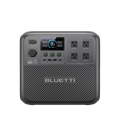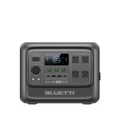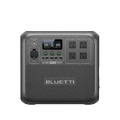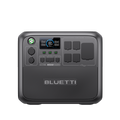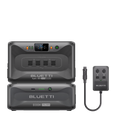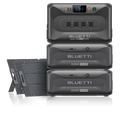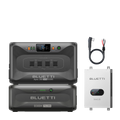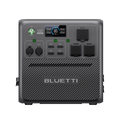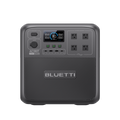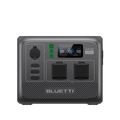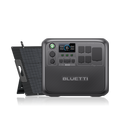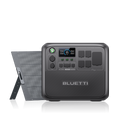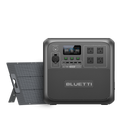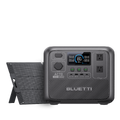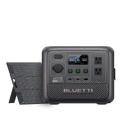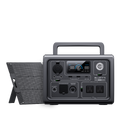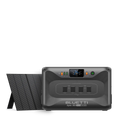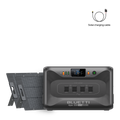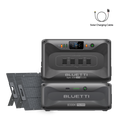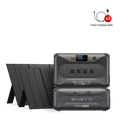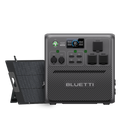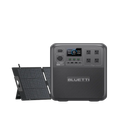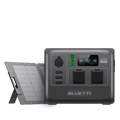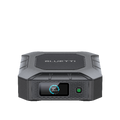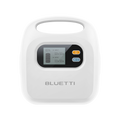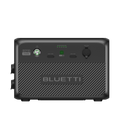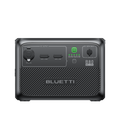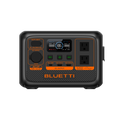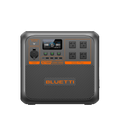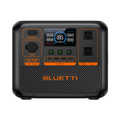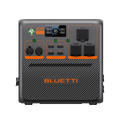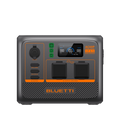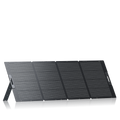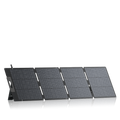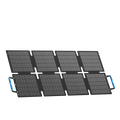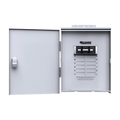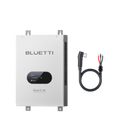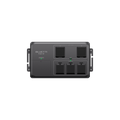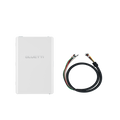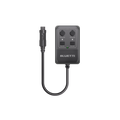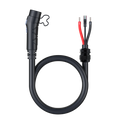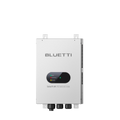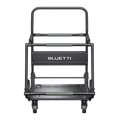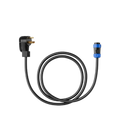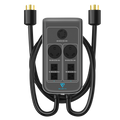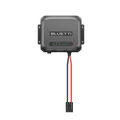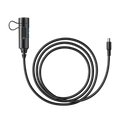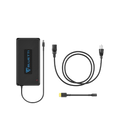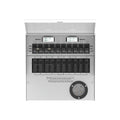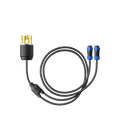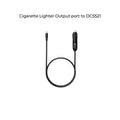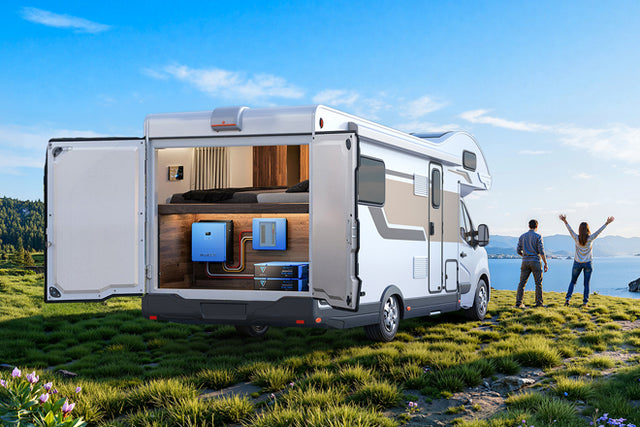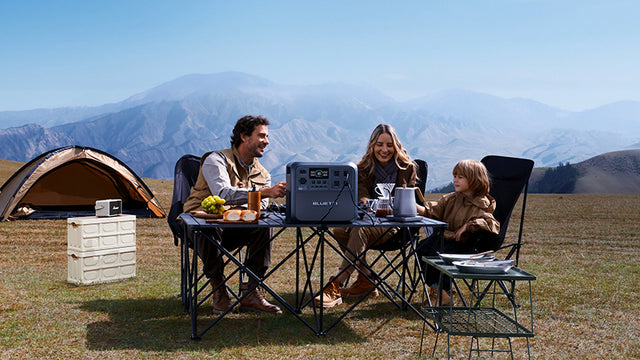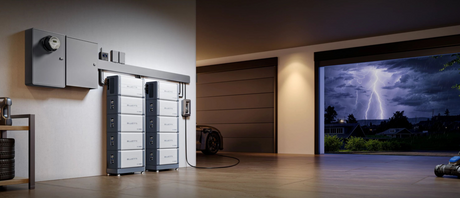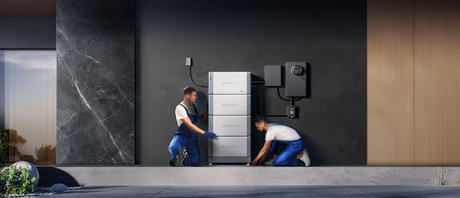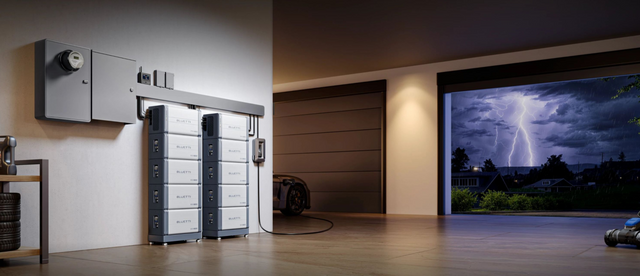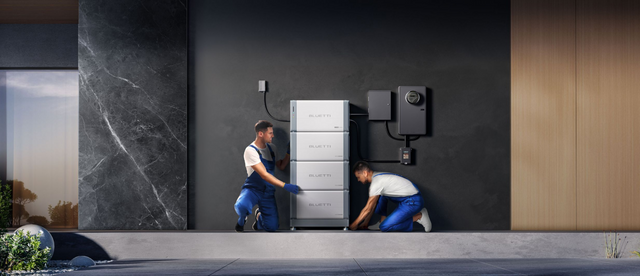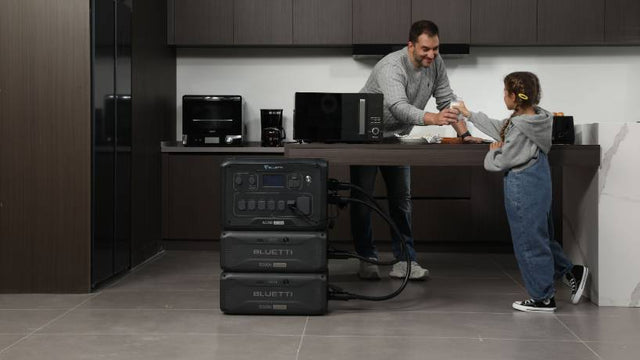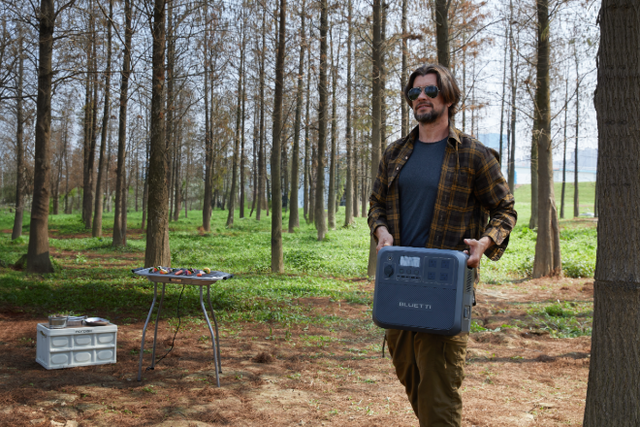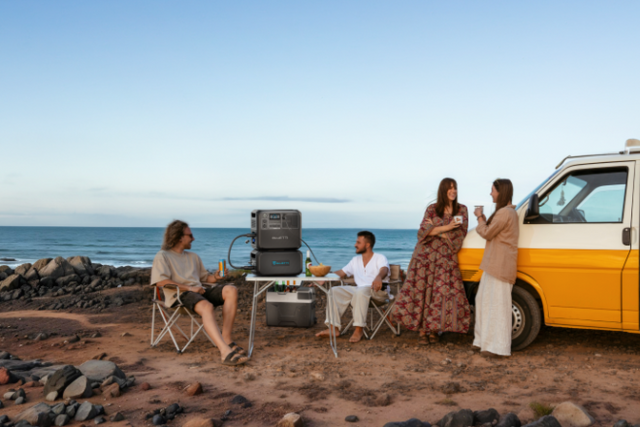Your cart is empty
Shop our products
A 1500W generator is a great option if you need a convenient, small-scale power source. It is great to use in small households, for outdoor activities, or to serve as backup during power outages. But what can a 1500-watt generator run?
In this post, you will find the answer to that question, along with what can overload it and reduce its run time. We'll also discuss the rationale for switching to a cleaner and more efficient energy source, which will prove a better long-term alternative to save on fuel and prevent emissions. So, keep reading!
What Is a 1500W Generator?
A 1500W generator is a compact, portable generator that is perfect to employ for small appliances. It is good in small houses, camping, and tailgating, or as an alternative to vital gadgets in case of a power cut.
Generators with 1500W weigh 30-50 pounds and can be easily carried. They operate at 50–65 decibels, making them quieter than larger models. A 1500W unit delivers 1,500 watts of constant power. Depending on the model, a 1500W generator may provide 1,800–2,200 watts of surge power. Here's what running and surge watts mean:
-
Starting (Surge) Power: A Short burst of power needed to start appliances with motors, like fridges.
-
Running (Operating) Power: Steady power used to keep devices operating.
You'll find that there are three main types of 1500W generators, such as:
-
Conventional Generators: Support gasoline, have lower cost, are louder, but are good for job sites or short-term use.
-
Inverter Generators: Run on batteries, rather than fuel, are much quieter, more efficient, and suited to camping, RV, and kitchen electronics.
-
Dual-Fuel Generators: May run on both propane and gas or alternate between both. They are great for emergencies (propane lasts longer).

Understanding Wattage Requirements of Common Devices
It is best not to exceed the wattage capacity of the 1500W generator by designating the total wattage of devices you wish to operate on it. You might also have to decide what appliances need to be powered in case of an emergency. Also, understand how pushing the generator too much will harm the electronic equipment, and turn the generator off. Therefore, you must have knowledge of the wattage consumption by your basic appliances in order not to overload the generator. This is how one can estimate:
In order to determine the power requirements of your devices, the formula to be utilized is:
Watts = Volts × Amps
For example, a fridge operates on 120 volts and 5 amperes, and when it is turned on, it requires an energy of 600W. But to get it going may require more than 1,800 watts, though. You can find this info on appliance labels, usually on the back or bottom. Look for voltage and amp ratings, or use a plug-in wattage meter to measure actual power use.
Example Wattage of Some Common Appliances
Here's an example of the starting and running wattage of some common appliances. However, not all of them require surge power:
|
Appliance |
Running Wattage |
Starting Wattage |
|
Smartphone Charger |
5–10W |
– |
|
LED Light Bulb |
5–20W |
– |
|
Laptop |
50–100W |
– |
|
Box Fan |
50–200W |
– |
|
Small TV (32”) |
100–200W |
– |
|
Mini Fridge |
100W |
1000W |
What Appliances 1500W Generator Run?
Coming towards the next question that many users ask is, “What appliances can 1500W generators run?” They can run small appliances in emergency cases. But you'll have to make sure to run only a single device if it has a high running or starting wattage to avoid overloading the generator. Here are the different scenarios in which a 1500W generator can operate appliances, such as the following:
-
Essential Home Devices
A 1500W generator can run home essentials like WiFi, LED bulbs, a laptop, etc. It can also operate most kitchen appliances without problems, especially those that have minimal to no starting surge.
Appliance
Running Wattage
Starting Wattage
Smartphone Charger
5–10W
–
LED Light Bulb
5–20W
–
Laptop
50–100W
–
Box Fan
50–200W
–
Small TV (32”)
100–200W
–
Wi-Fi Router
10–30W
–
Desktop Computer
200–500W
300–800W
CPAP Machine
50–100W
–
Mini Fridge
400–600W
700–1,200W
Coffee Maker
600–1,200W
–
Food Processor
300–600W
600–1,200W
Toaster
800–1,500W
–
Small Microwave Oven
600–800W
900–1,200W
-
Camping and RV Usage
You can also power up essentials with a 1500W generator in your RV or during a camping trip, such as:
Appliance
Running Wattage
Starting Wattage
Smartphone Charger
5–10W
–
LED Light Bulb
5–20W
–
Laptop + Router
50-120W
–
Coffee Maker
600–1,200W
–
Portable Fridge
100–200W
400–600W
Small Microwave Oven
600–800W
900–1,200W
-
Construction Site
A 1500W generator supports many small tools that have no to minimal surge power on construction sites. But it's better to avoid operating multiple power devices at once, especially with higher surge power:
Device
Running Wattage
Starting Wattage
Belt Sander
1,000W
–
Disc Sander
1,200W
–
1/4′ Drill
300W
–
Electric Weed Trimmer
500W
–
Chain Saw
1,200W
–
Furnace Fan 1/8 HP
300W
500W
Furnace Fan 1/6 HP
500W
750W
Furnace Fan 1/4 HP
600W
1,000W
Paint Sprayer
360W
1,080W
Use Case Examples of What a 1500W Generator Can Run
These are some of the situations when a 1500W generator will be able to power several appliances simultaneously:
Scenario 1: Basic Home Appliances
-
5x LED Lights (10W each, 50W running).
-
Wi-Fi Router (20W running).
-
Laptop (80W running).
-
Box Fan (100W running).
-
Smartphone Charger (10W running).
This setup uses very little power, just 260W for operating all appliances. Since there are no motor-driven devices, there's no surge power needed. You can even add a mini fridge (500W) and still stay well under 800W, making it a safe and efficient combo for a 1500W generator.
Scenario 2: Fridge + Essentials
-
4 x LED Lights (10W each, 40W running).
-
Laptop (80W running).
-
Wi-Fi Router (20W running).
-
Box Fan (100W running).
-
Mini Fridge (500W running, 1000W starting).
It has a total of 740W, leaving around 760W of spare. The surge of the mini fridge does not last long (1,000W), and it does not exceed the starting capacity (1,800-2,200W) of the generator. As well as no other large appliances are powered up. So, it functions well.
Scenario 3: RV/Camping Setup
-
Portable Fridge (150W running, 500W starting).
-
Coffee Maker (800W running).
-
2 x LED Camp Lights (10W each, 20W running).
-
Phone + Laptop (100W running).
Although the fridge starts first and, in initial usage, operates at 500W temporarily, this, on top of the 800W that the coffee maker will be using, means a total of 1,300W. This is less than the 1,500W maximum. When the fridge stabilizes to 150W, one can utilize a lot of power to run other appliances.
Scenario 4: Multiple Power Tools (Safe Operation)
-
Furnace Fan 1/8 HP (300W running, 500W starting).
-
Paint Sprayer (360W running, 1080W starting).
The total running power is 660W from a drill, fan, and sprayer. While the fan and sprayer have startup surges, you can still control them by starting each of these tools one at a time. Thus, this configuration is usable with a 1500W generator.

What Appliances a 1500W Generator Won't Run?
Now the most important query of this post: “Can a 1500-watt generator run big appliances or operate several small devices at the same time?” It functions well for small devices in emergencies. But appliances that use around 1,500W or more are risky to run.
Also, power-hungry devices with motors, like AC units, power tools, compressors, grills, or fridges, need 2–3 times more power to start. This is too much for a 1500W generator to bear. Here are some examples of appliances it can't run and situations where it falls short of running multiple devices at once:
|
Appliance |
Running Wattage |
Starting Wattage |
|
Home Refrigerator |
700–1,200W |
2,000–3,000W |
|
Window AC (5,000 BTU) |
500–1,200W |
1,500–2,000W |
|
Hair Dryer |
1800–2,000W |
– |
|
Electric Grill |
1000–1,500W |
1,500–2,000W |
|
Washing Machine |
500–1,400W |
1,200–2,500W |
|
1/3 HP Sump Pump |
300–800W |
1,300–2,900W |
|
Electric Water Heater |
750–1,500W |
– |
Scenario 1: Microwave + Coffee Maker (Overload!)
-
Small Microwave (800W running, 1200W starting).
-
Coffee Maker (1000W running).
The running wattage of these appliances (1,800W) exceeds the 1,500W threshold, and this will make the generator collapse or break down due to overheating. But you have the option of using either the coffee maker or the microwave at a given time.
Scenario 2: Mini Fridge + Toaster (Surge Overload!)
-
Mini Fridge (500W running, 1200W starting).
-
Toaster (1000W running).
Operating at 1,500W, this setup has a surge of 1,200W, which is too close to the edge. The load may rapidly increase to more than 2,200W in the event that the fridge starts when the toaster is already turned on.
Scenario 3: Multiple Power Tools (Overload Risk)
-
Belt Sander (1,000W running).
-
Chain Saw (1,200W running).
-
Disc Sander (1,200W running).
This setup won't function because the total power needed is 2,200W for a belt sander and chainsaw, which goes over the 1,500W limit. Even the total of 1,800W when running a disc sander and furnace fan simultaneously is excessive.

Runtime Estimates and Fuel Efficiency for a 1500W Generator
If you don't know how long your 1500W generator's going to run or how much gas it guzzles, you're just asking for trouble next time the power cuts out. Nobody wants to be stuck in the middle of a blackout, camping trip, or whatever, scrambling for more fuel.
So, take into account certain factors when estimating the running time and the fuel consumption of a 1500W generator ahead of time. More fuel efficiency also implies more money saved, fewer refills, and less wear on the generator.
-
Runtime by Load Percentage
If you've got a 1500W generator, at about a quarter load (so, like 375 watts), you're looking at anywhere from 8 to 12 hours of juice. This is plenty for the basics: a few lights, your laptop, maybe a fan. Crank it up to half its capacity, though (that's 750 watts, not the full 1,500, by the way), and you're down to 5 to 8 hours. That's enough to juice up your mini-fridge and the TV for a bit. But at 75% (1,125W), it will run 3-5 hours and 2-4 hours at full load (1,500W). But using less power stretches fuel much further.
-
Fuel Type and Efficiency
Fuel type affects the runtime of a 1500W generator. Gasoline gives the longest use (5–8 hours at 50% load) but can degrade within six months without a fuel stabilizer. While Propane lasts less (4–6 hours), but stores much longer. Diesel is rare in small generators, but it is more efficient if available. For most users, gas is best for regular use, while propane is great for emergency storage.
-
Maintenance Matters
Bad maintenance can cut the efficiency of a 1500W generator by up to 30%. The most common problems that result from it are clogged air filters, worn spark plugs, and low oil levels. They cause the engine to consume more energy and burn up fuel. To maintain the generator in good condition, change the oil in 50-100 hours and clean the air filter once a season. It's also better to add some fuel stabilizer when the generator will be stored for more than a month.
-
Weather and Environment
Any type of cold weather, elevated altitude, or heat diminishes the efficiency of a 1500W generator. Inefficient performance is brought about by cold starts and thick oil, reducing it as much as 20 percent.
Moreover, high-altitude performance reduces power by 35.5 percent every 1,000 feet. The engine may also be overheated by extreme heat, and its efficiency may be reduced by 5-10%. Thus, use winter-grade oil in a cold environment and examine altitude settings where applicable in case of operating the generator at high altitudes.
BLUETTI 1500W Solar Generator——Elite 100 V2
A solar generator would be a great solution in case you need to serve simple household equipment. It's a bit cleaner, quieter, and more versatile than a 1500W gas generator. Portable power stations are also quiet (below 30dB), whereas gas generators are pretty loud (50-70dB). They can be charged with solar, wall, or car chargers, have zero emissions, and are suitable for use indoors.
Gas generators, on the other hand, produce toxic fumes and should be placed outside. Power stations are lighter (10-50 lbs) and easier to carry, and do not have to be maintained, such as with oil changes, engine maintenance, etc. They make ideal fits during camping, RVs, or even in case of a home emergency, as most of them can be charged using solar panels.
To take an example of the BLUETTI Elite 100 V2. With a 1,800W output (up to 2,700W peak), it has the ability to serve basic household and camping appliances simultaneously. With 1,000W solar input and built-in MPPT, it fully charges in about 70 minutes using solar. However, having support for 1,200W TurboBoost AC charging, it charges to 80 percent in 45 minutes.
Besides, it possesses 11 ports and is 6x faster than ordinary car chargers. Slight in weight, with only 25 lbs, Elite 100 V2 has a compact 17L design, a secret handle, and is ideal to carry on a journey, during camping, or emergency. It operates on low noise (approximately 30dB), and it has a 10ms UPS to immediately connect to a battery backup. This is why it is suitable for sensitive equipment such as CPAP or computers.

FAQs
-
Can I charge my electric car with a 1500-watt generator?
No. Most of the electric car chargers require a minimum wattage of 3,000-7,000W. The power of a 1,500W generator is insufficient, and it may not provide a constant electricity source, which may harm the charger or your car.
-
Is there any chance to use power tools with a 1500-watt generator at construction sites?
Yes. Two examples of tools that can be operated with a 1500-watt generator are small drilling machines and sanders at construction work sites. But you can run only one tool at a time with no other devices, not even small ones.
-
How much can a 1500-watt generator power an RV?
Honestly, a 1500-watt generator isn't going to run your whole RV setup. Forget about blasting the AC or microwaving a burrito while charging your e-bike. But it's not totally useless. You can totally keep the lights on, charge your phone, and maybe run a mini fridge or an ice maker, or a laptop, or a power bank with a 1500W generator.
-
Is it possible to use a 1500 W power unit to supply a house?
No. It just has the ability to juice up small household items. Take a mini fridge, a compact microwave, a CPAP machine, a coffee maker, LED lights, laptops, and yeah, your phone. Sure, you can run these, but don't power them all at once. The 1500W generator will otherwise tap out.
The Bottom Line
In this post, we have tried to address your question, which is, “What can a 1500-watt generator run?” to the best of our knowledge. This generator's wattage is ideal in case of power outages, camping, and RV use. You can juice up appliances like LED lights, mini fans, a laptop, or even a mini fridge. Just don't get greedy and try to run them all at once.
This is because a 1500W generator just isn't going to cut it for the big appliances, like full-size fridges, microwaves, or AC. It'll tap out fast. If you want more wattage but wish to save some cash on gas, just grab a solar generator. You can actually use it inside without worrying about fumes. A good option is a BLUETTI Elite 100 V2 solar generator that can help you charge your simple equipment in an eco-friendly fashion.
It is rated at 1,800W output (2,700W surge), much more than what a 1,500W generator can power. The unit also has quick charge capabilities with solar input, a car charger, or a wall outlet. Moreover, it's very silent with a low sound of 30dB, is portable, and is ideal during emergencies and indoor use.
Shop products from this article
You May Also Like

Portable Power Station 1000W: Benefits, Limitations, What It Can Run, and More

Campervan Christmas Gifts That Actually Get Used (2025 Gift Guide)

